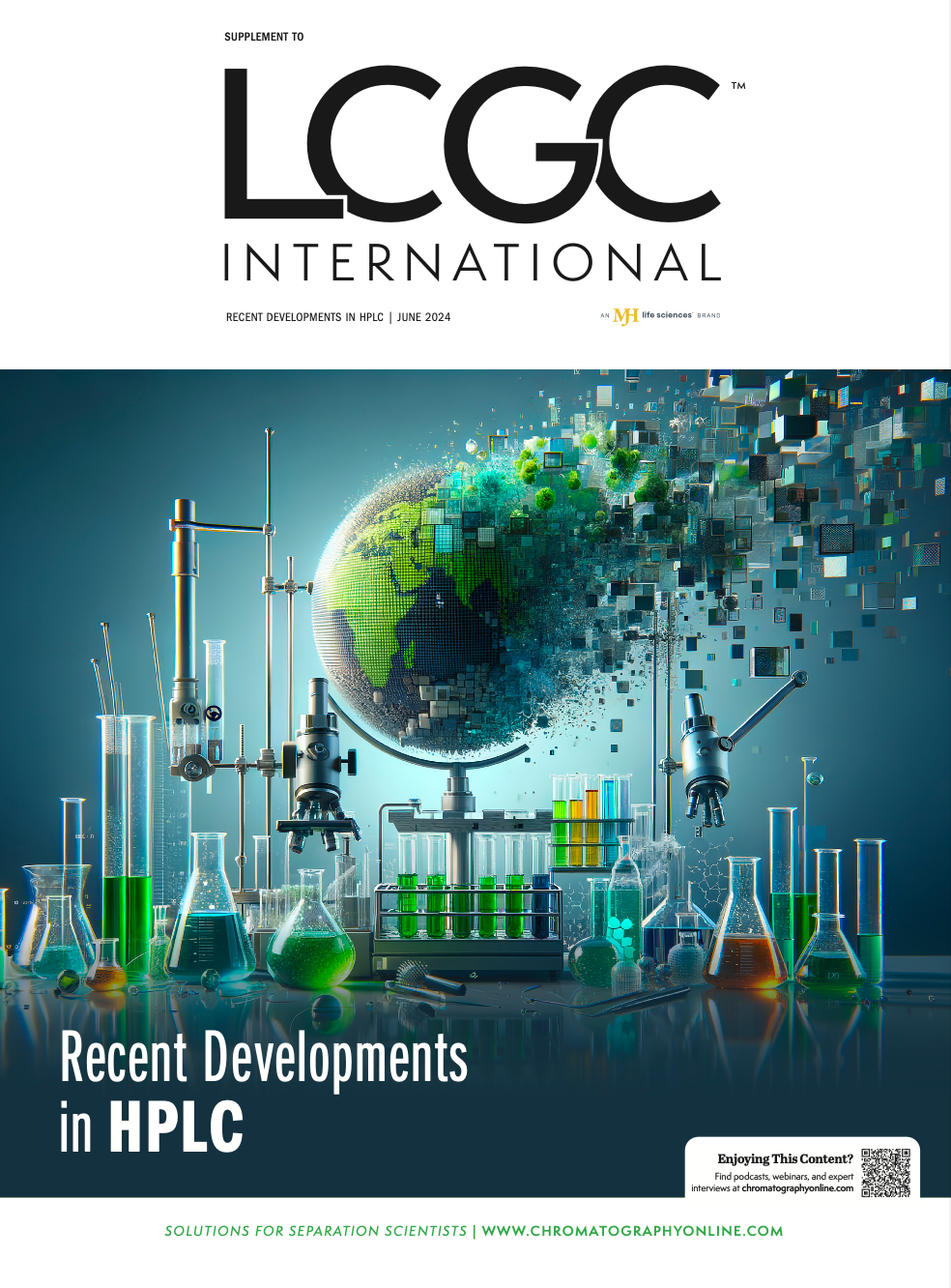Recent Developments in HPLC & UHPLC
In the world of liquid chromatography (LC), innovative strides in column technology continue to take place. We are also reminded that there is always more to learn about “well-known” methodologies, and our craft is continuously influenced by important social concerns.
Within this collection of articles, you will find some interesting and real examples of technology advancements, learnings, and potential responses to these social drivers.
First up is a study from the Department of Chemistry at Lomonosov Moscow State University exploring the effects of mobile phase pH and counterion concentration on retention in hydrophilic interaction liquid chromatography (HILIC). The team focused on analytes with varying acid-base properties using a silica-based Diol stationary phase. Their research revealed that the Diol phase, a neutral ligand, behaves as a cation exchanger at a pH of 5.76 because of residual dissociated silanols, but exhibits minimal charge at lower pH levels (2.85). This behavior significantly impacts separation efficiency and asymmetry factors for ionized compounds, offering a deeper understanding of how pH and counterion concentration can be optimized to enhance separation conditions for complex analyte mixtures.
The call for greener, more sustainable laboratory practices is increasingly urgent, and Avantor, Inc. presents compelling arguments for integrating sustainability into liquid chromatography (LC). With climate change necessitating a shift towards environmentally responsible methods, the authors highlight the substantial environmental footprint of traditional chromatography practices—specifically the large consumption of methanol and acetonitrile, estimated at over 150,000 tons. By adhering to the twelve principles of green chemistry, originally developed by John Warner and Paul Anastas, the chromatography community can significantly reduce this footprint. These principles advocate for methods like reducing column diameter and using smaller particles to drive high efficiency, potentially transforming both environmental impact and chromatographic performance. The authors underscore the importance of organizations like MyGreenLab, which assess the lifecycle performance of instrumentation through the ACT (Accountability, Consistency, and Transparency) program, ensuring that green practices are methodically implemented.
In a fascinating discovery, a joint research group from Oslo University Hospital and the University of Oslo investigate the unexpected retention order of ketamine analogs using a biphenyl stationary phase. Typically, branched-chain compounds are eluted before straight-chain compounds when using acetonitrile or methanol in conjunction with C18 or biphenyl stationary phases. However, the team observed the opposite retention order for methoxpropamine (MXPr) and methoxisopropamine (MXiPr) when methanol was used with a biphenyl phase, a phenomenon not seen with acetonitrile. This surprising result persisted across biphenyl columns from two different vendors, highlighting the need for further research to fully understand the retention mechanisms at play. This study exemplifies the continual surprises and challenges faced when exploring alternative stationary phases in reverse-phase LC (RPLC).
Cory E. Muraco of MilliporeSigma delves into the ongoing quest for increased sensitivity in LC, particularly in pharmaceutical and clinical settings, in our final paper. With high-end mass spectrometry instruments capable of detecting analytes at attomolar concentrations, the prohibitive costs and operational complexity present significant barriers. An alternative approach to achieving high sensitivity is by reducing the internal diameter (i.d.) of the LC column. Although the shift from 4.6-mm to 2.1-mm i.d. columns has been standard practice, Muraco discusses a recently introduced 1.5-mm i.d. column format. This new design allows for sensitivities comparable to capillary-like separations, without the typical drawbacks associated with capillary-flow formats. The paper outlines the theory behind this increased sensitivity and presents applied examples to demonstrate performance.
These articles collectively underscore the varied advancements in LC column technology that continue to take place. Advances in technology, new discoveries using traditional tools, and addressing the pressing need for sustainability all provide drivers that are shaping the future of chromatography.
Enjoy!
ABOUT COLUMN EDITOR
David S. Bell, Lead Consultant and Owner at ASKkPrime, LLC, specializes in separation science consultancy, is Editor of the Column Watch series of articles and serves on the Editorial Advisory Board for LCGC International. With over 30 years of experience, he has contributed significantly to chromatography advancements, focusing on stationary phase design, device development, and molecular interaction research. Dave’s work spans gas chromatography, liquid chromatography, sample preparation, and pharmaceutical analytical method development. He holds a PhD in Chemistry from The Pennsylvania State University, has presented research globally, and has authored more than 95 peer-reviewed and trade magazine articles. Direct correspondence to: askkprime@gmail.com


Polysorbate Quantification and Degradation Analysis via LC and Charged Aerosol Detection
April 9th 2025Scientists from ThermoFisher Scientific published a review article in the Journal of Chromatography A that provided an overview of HPLC analysis using charged aerosol detection can help with polysorbate quantification.
Removing Double-Stranded RNA Impurities Using Chromatography
April 8th 2025Researchers from Agency for Science, Technology and Research in Singapore recently published a review article exploring how chromatography can be used to remove double-stranded RNA impurities during mRNA therapeutics production.













